
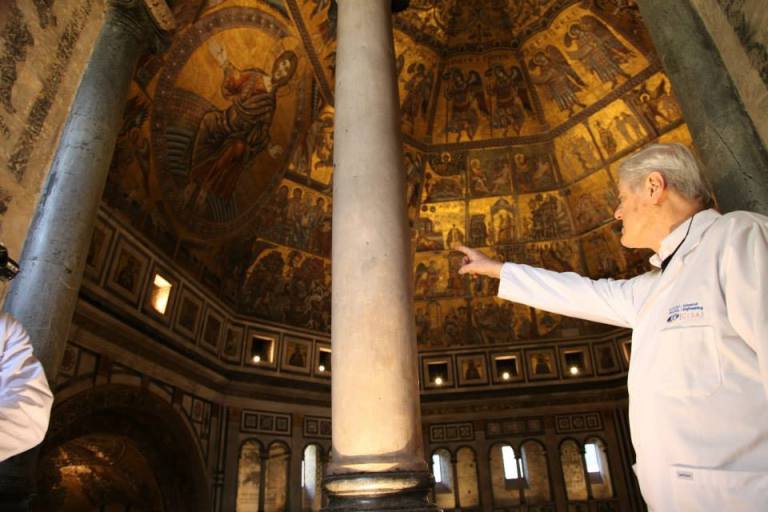
Same beginning blurb for each Baptistery section:
The primary CISA3 field site in 2013 was the Baptistery of St. Giovanni, one of Florence’s most famous, venerated, and mysterious monuments. For our research goals see this.
The Opera del Duomo di Santa Maria del Fiore (OPA) invited CISA3 to join their interdisciplinary team of researchers working to establish a chronology of construction for the Florence Baptistery of St. Giovanni (John). The evolution of the site from its Roman origins upwards is rather mysterious. Significant research has been done by dedicated scholars, but they’ve no way to correlate that information altogether to start making sense of it. Enter CISA3 with our concept of layered realities of data draped on a digital scaffold.
Thus we imaged (via terrestrial laser scanning, thermography, high resolution photogrammetry (including structure from motion), stereoscopic imaging, and multispectral imaging the interior of the building and the exterior of the building – emphasizing spaces that the public has no access to (i.e. the upper passages – there are three floors up there that no one ever sees or even realizes as really only one level of balcony is visible from the ground), and the subterranean Roman archaeological site underneath the altar/scarsella – as well as the main chamber of the active house of worship which the public can access (for 10 euro).


And now onto the new bit of the blog:
Imaging the Interiors of the Baptistery of St. Giovanni
To image the interior we worked with OPA to have access very early in the morning prior to its opening for tourists and later in the evening after it had closed for the night. Led in the field by our Emeritus Director Maurizio Seracini, the team surveyed, planned, and was prepped and ready for action for whenever these rare windows of access would occur.
We had a divide and conquer mentality- especially as we knew we wouldnt be able to collect all of the data for a complete perfect replica of everything given the access time crunch (for instance, the laser scanner never dealt with the insides of the first floor balconies and structure from motion for color texturing wasn’t even attempted on the second and third floors of dark, narrow passageways leading round the bottom of the dome edges). This also meant for those of us working in the same area, we had to do an elaborate gadget dance to stay out of each other’s way.
As I was responsible for all things point cloud-tastic, I circled our Faro Focus round the main chamber and scarcella the first time we had access, and then went after the upper corridors hidden behind the walls–in terms of establishing the monuments structural integrity–these interiors plus the exteriors will aid in conservation assessment and planning. Tucked in between the walls of the structure, with the back of the inner walls of the dome visible in the airgap above, it will be an
interesting reference challenge to piece together the traversed narrow corridors. But then, this is where all of my elaborate metadata comes in. ;) The corridors also meant a significant amount of playing hide and go seek while timing the scanner in particularly dark bits of the upper roof area. It’s always very cool to work at sites like these, in areas few people ever see. But when you’re sitting quietly in the dark up in the proverbial rafters, waiting for the scanner, its sometimes a little unnerving.
Vid was meanwhile in charge of digitizing the artifacts in the Baptistery selected by Maurizio and our wonderful art historian Katharina Giraldi-Haller for priority imaging. Juggling lighting rigs, camera equipment, and ever-mindful of my scanning, Mike Hess’s thermography, John Mangan’s metadata photography and filming, and all the rest: Vid imaged the Baptistery’s carved font (recently made even MORE famous by Dan Brown’s use of it in Inferno), and several of the sarcophagi and statues lining the walls.

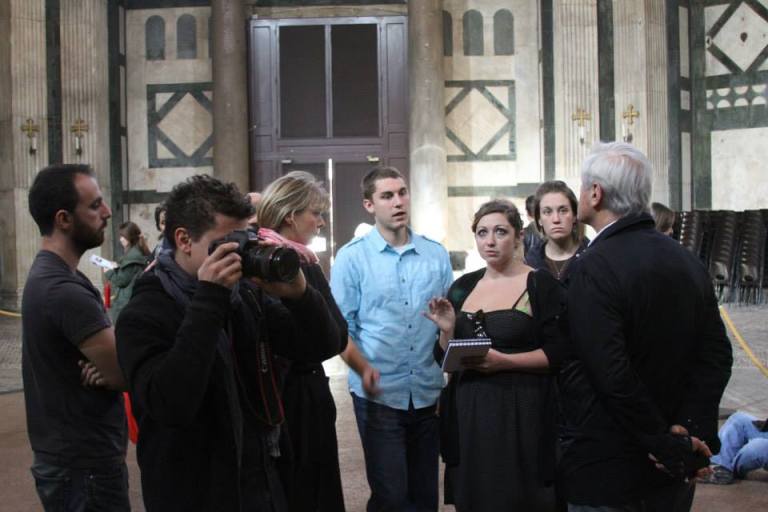
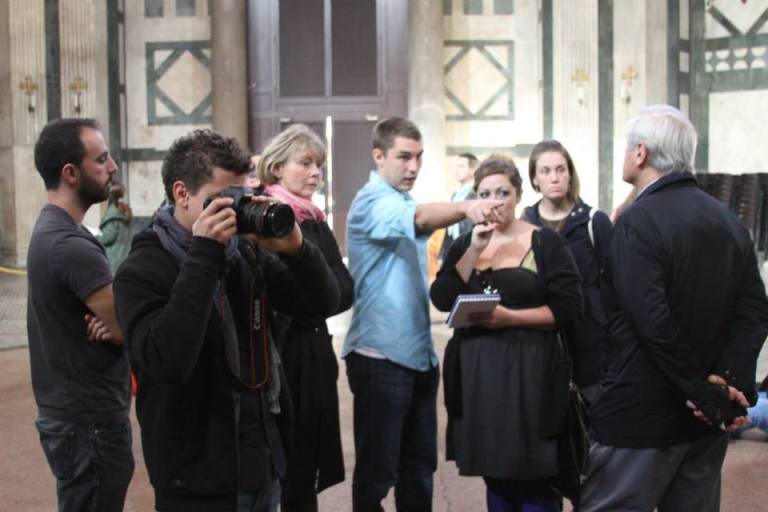
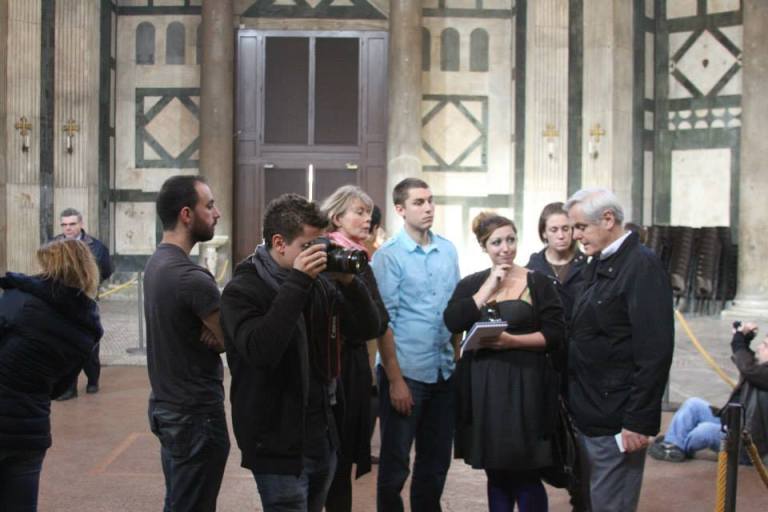
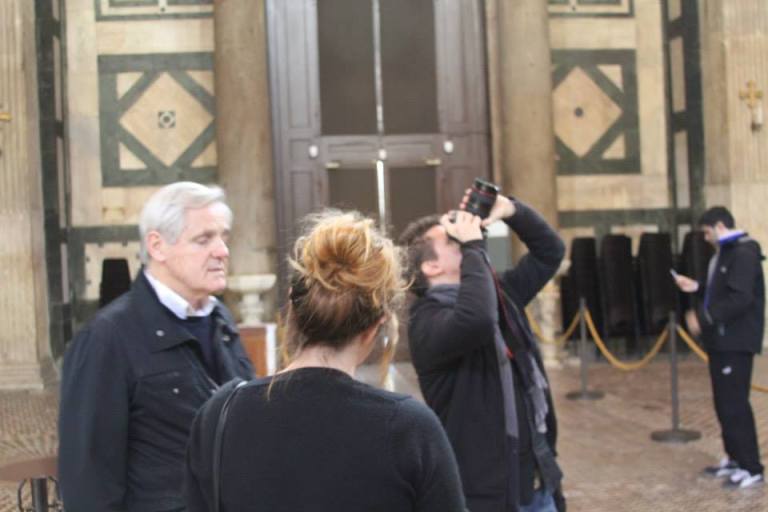
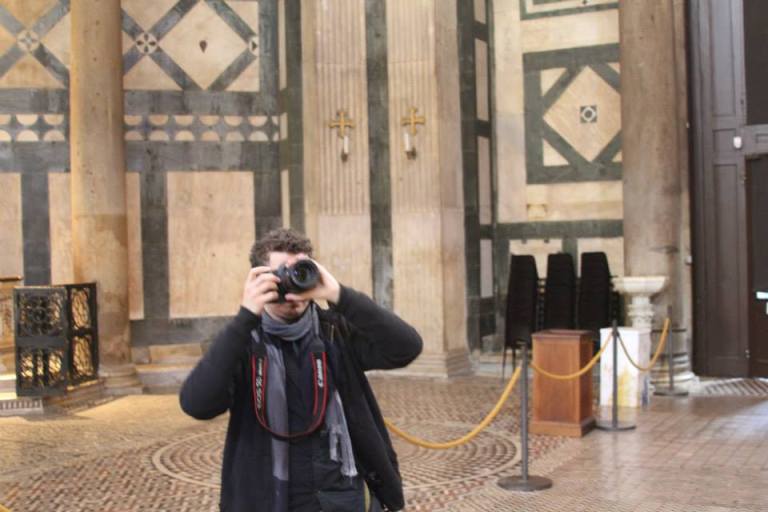
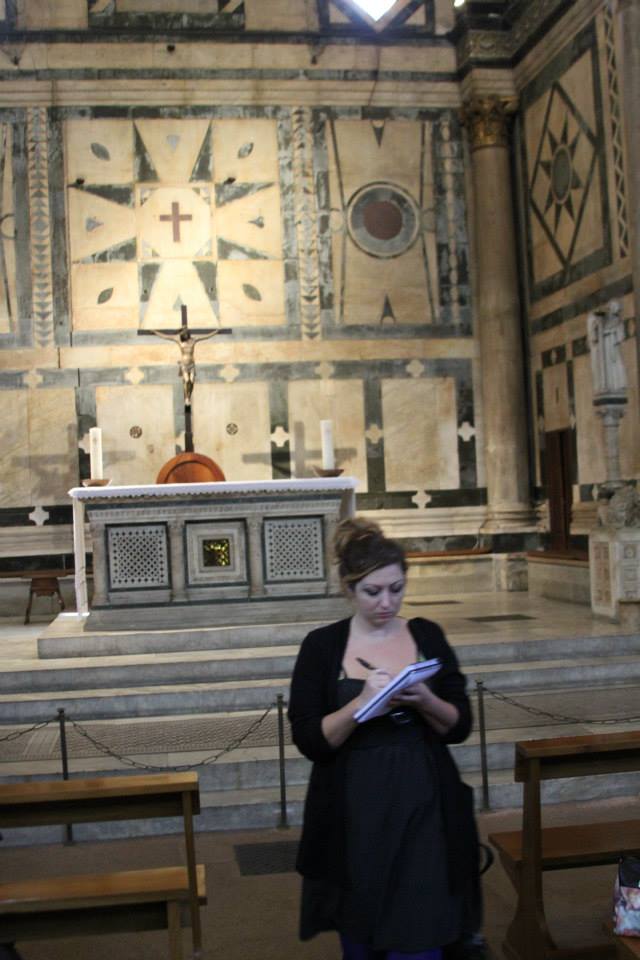
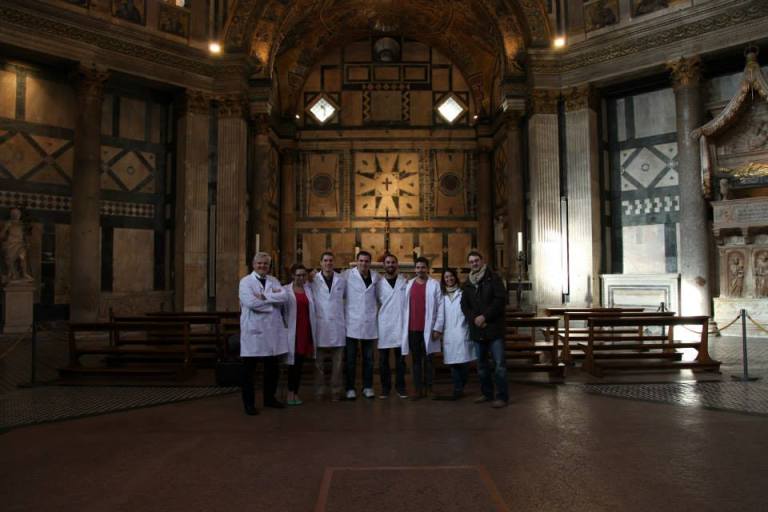
- The team for one of our longer access times: Maurizio Seracini, Mike Hess, John Mangan, DV, Vid Petrovic, Caterina Maffeis, and one of the Baptistery’s current architects.

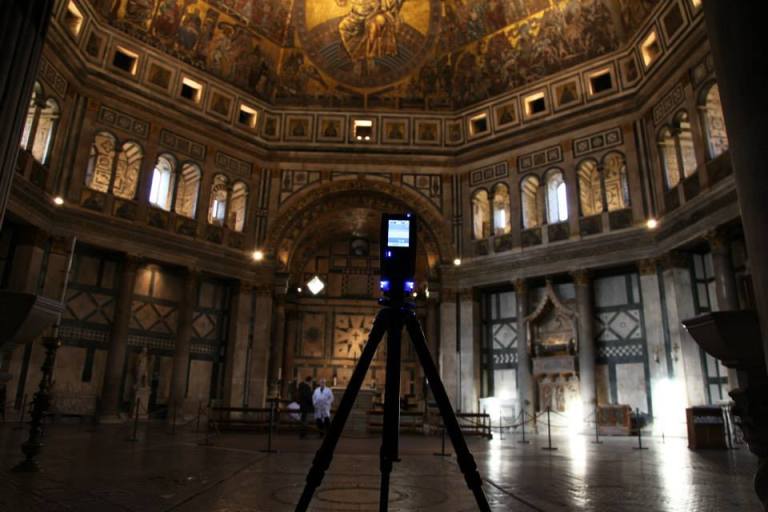

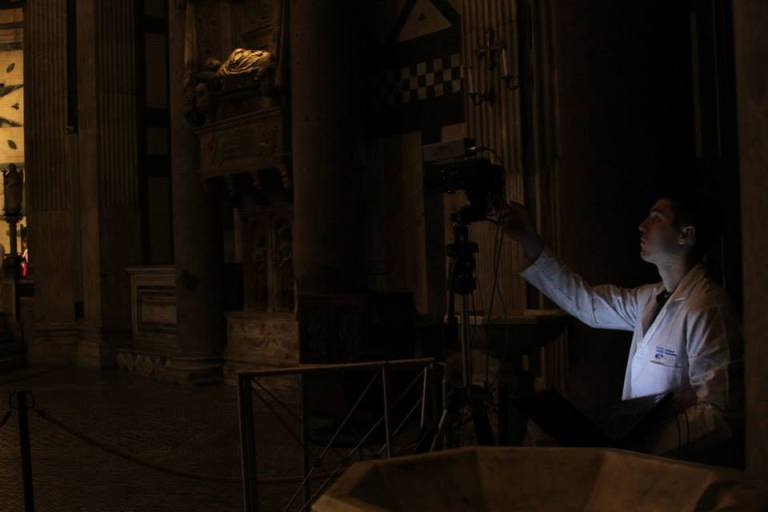
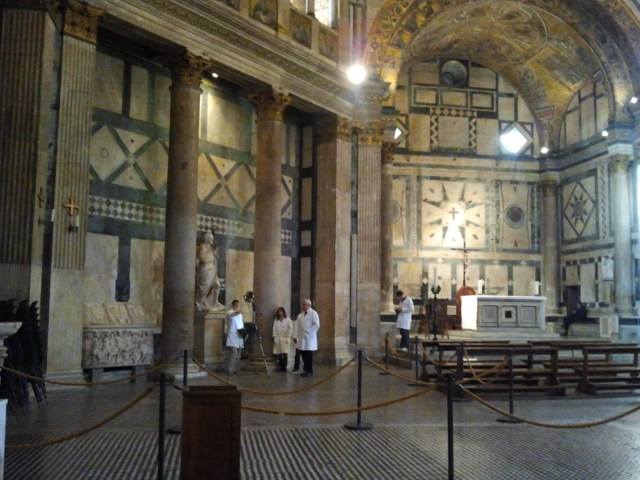
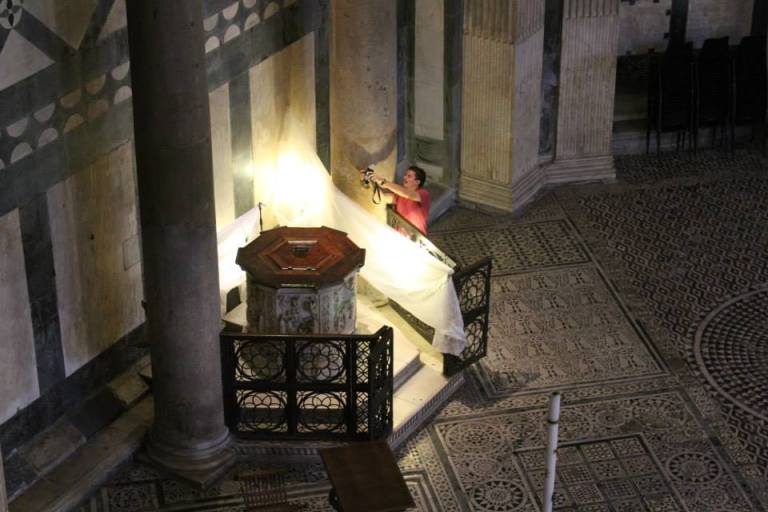


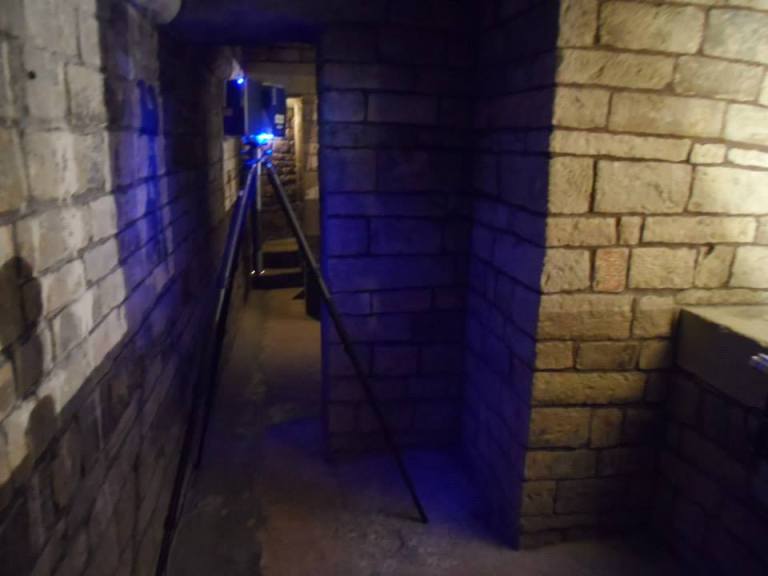
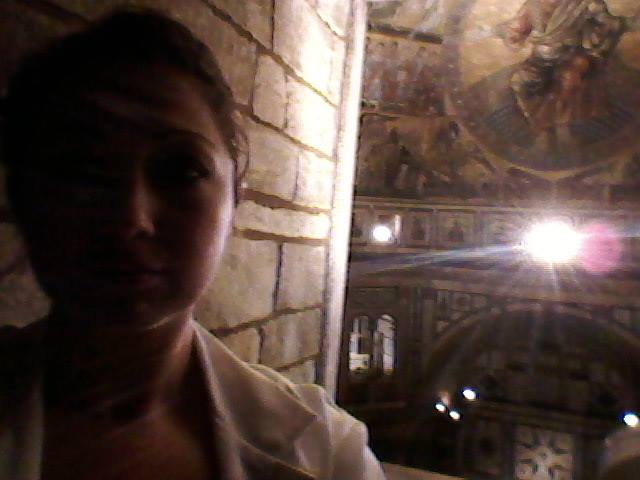
Please note: There were just so many good pics to choose from of our work at the Baptistery, so I divided the blog into four blogs. Each one will have more or less a similar primary chunk of text (in case anyone is playing with these out of context), with spatially themed pics dealing with the Outside, Inside, Below, and Above of the marvelous and wonderful Baptistery.

One thought on “Digital Investigations Inside Florence’s Baptistery of St. Giovanni”